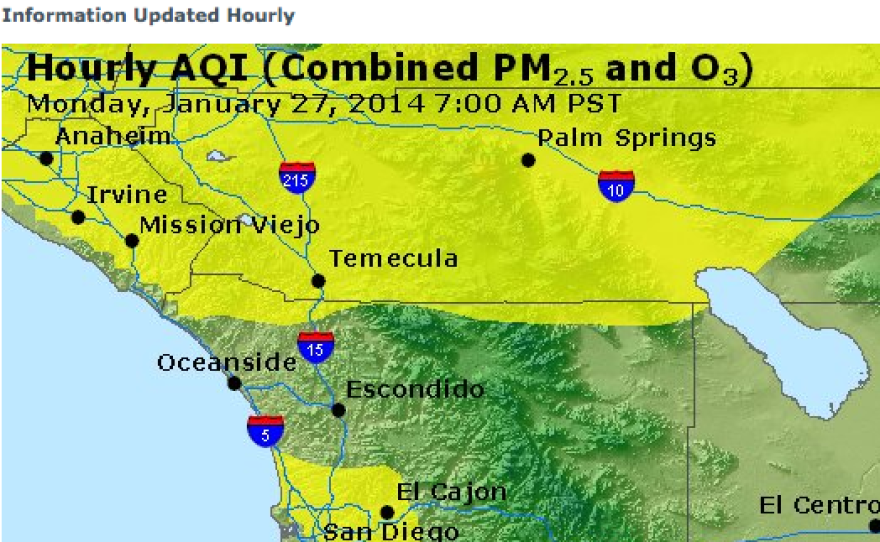Warm and dry weather is being blamed for worsening air pollution in some areas of California, but overall air quality in San Diego County remains in the good to moderate range, according to the San Diego County Air Pollution Control District (APCD).


A storm-blocking high pressure dome that has hovered over the state the past 37 days has caused a buildup of pollution particles in regions like Los Angeles County and the Central Valley, posing a health risk.
“Without the winds and things that come with the storm to blow it away and move it out, we get what we call stagnation periods, said Bill Brick, senior meteorologist with San Diego County Air Pollution Control District.
“And we get a strong inversion setup that keeps the pollutants down at low levels.”
Inversions occur when air near the ground becomes cooler than air above, and the warm air acts as lid to trap pollutants, such as smoke and car exhaust, close to the ground.
“Escondido and El Cajon are valleys that are heavily populated and they do tend to get strong inversions,” explained Brick. “We’ve had a couple days this year where particulates were a little bit higher than normal, but still our overall trend is to have better days.”
California's other prevalent pollution is ozone, which develops in the atmosphere when certain chemicals in auto emissions and other sources interact with heat and sunlight to create smog.
Last year was San Diego County’s cleanest air quality year on record for ozone,” Brick said.
Brick said he doesn’t expect the drought itself to dramatically impact San Diego’s air quality because of the region’s successful efforts in reducing emissions.
The biggest concern is smoke from a drought-induced fire, said Brick.
“Those particulates are generated through the combustion process of the fires,” Brick explained. When you’re impacted by that smoke it can be pretty hazardous.”







